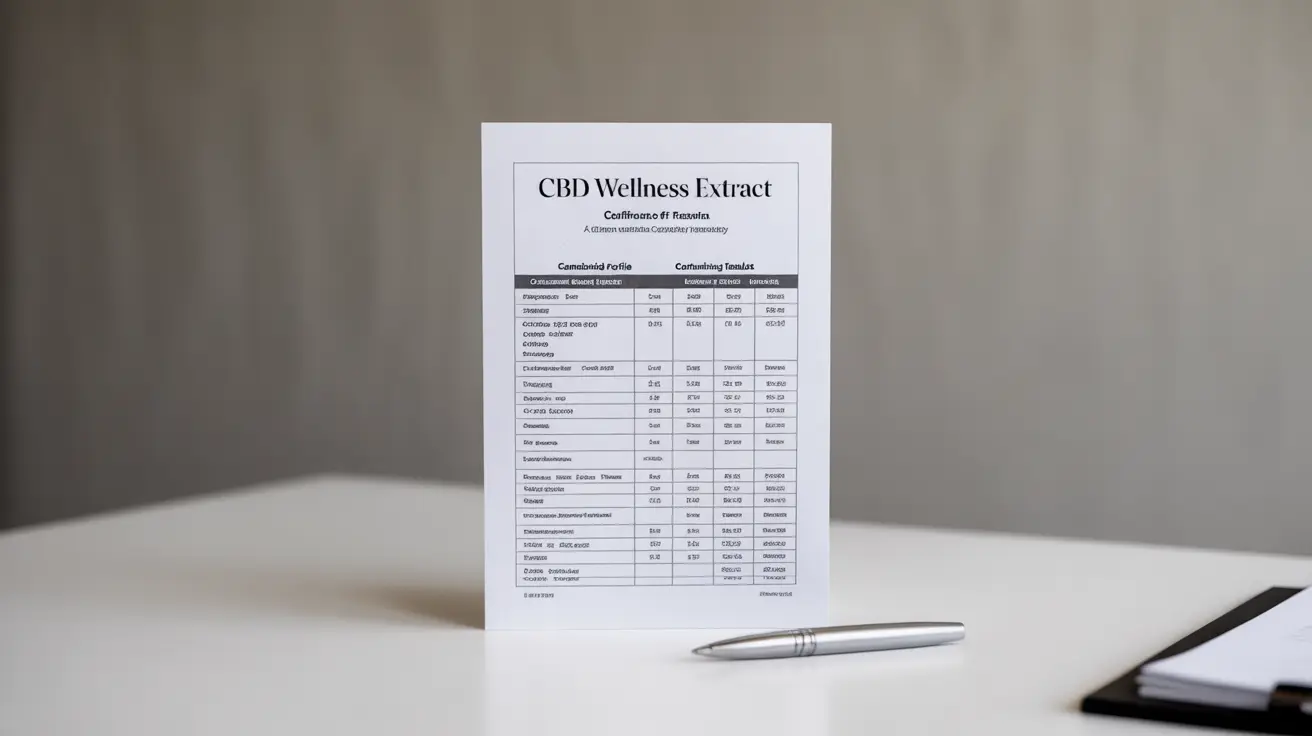As CBD products become increasingly popular, understanding how to verify their quality and safety is crucial for consumers. One of the most important tools in CBD quality control is the Certificate of Analysis (COA), a detailed document that provides vital information about a product's composition and purity.
In this comprehensive guide, we'll explore how to interpret these essential documents and understand the various quality control measures that ensure CBD products are safe and effective.
What is a Certificate of Analysis?
A Certificate of Analysis is a detailed laboratory report that provides information about the chemical composition of a CBD product. This document serves as a quality control measure, verifying the concentration of cannabinoids and confirming the absence of harmful contaminants.
Each COA should come from an independent, third-party laboratory, ensuring unbiased and accurate results. This transparency allows consumers to make informed decisions about their CBD purchases.
Key Components of a CBD Certificate of Analysis
Cannabinoid Profile
The cannabinoid profile section lists the concentrations of various cannabinoids present in the product, including:
- CBD (Cannabidiol)
- THC (Tetrahydrocannabinol)
- CBG (Cannabigerol)
- CBN (Cannabinol)
- CBC (Cannabichromene)
Contaminant Testing Results
High-quality COAs include comprehensive testing for potentially harmful substances:
- Heavy metals (lead, mercury, arsenic, cadmium)
- Pesticides and herbicides
- Residual solvents
- Microbiological contaminants
- Mycotoxins
Understanding Quality Control Testing Methods
Third-party laboratories use various sophisticated testing methods to analyze CBD products. These typically include:
- High-Performance Liquid Chromatography (HPLC)
- Mass Spectrometry
- Gas Chromatography
- Microbial analysis techniques
Verifying Product Quality Through COAs
When examining a COA for quality control purposes, consider these essential factors:
- The testing laboratory's name and contact information
- The date of analysis
- Batch number matching the product
- Clear presentation of results with appropriate units
- Pass/fail indicators for contaminant testing
Legal Compliance and Safety Standards
Quality control measures ensure CBD products meet legal requirements, particularly regarding THC content. Federal law requires hemp-derived CBD products to contain no more than 0.3% THC by dry weight. A proper COA helps verify this compliance.
Frequently Asked Questions
What is a Certificate of Analysis (COA) and why is it important for verifying CBD product quality?
A Certificate of Analysis (COA) is a laboratory-issued document that details the chemical composition and purity of a CBD product. It's important because it provides independent verification of cannabinoid content and confirms the absence of harmful contaminants, helping consumers make informed decisions about product safety and quality.
How can I check if a CBD product's label accurately matches its cannabinoid content?
Compare the cannabinoid concentrations listed on the product label with those shown in the COA. The numbers should match within a reasonable margin of error (typically ±10%). Pay particular attention to the CBD content and THC levels to ensure accuracy.
What contaminants are tested for in high-quality CBD products, and how do COAs report these results?
High-quality CBD products are tested for heavy metals, pesticides, residual solvents, microbiological contamination, and mycotoxins. COAs typically report these results in a pass/fail format or with specific concentration levels, often including acceptable limits for reference.
How do third-party laboratories contribute to the quality control of CBD products?
Third-party laboratories provide unbiased, independent testing of CBD products. These facilities use advanced analytical methods to verify cannabinoid content and screen for contaminants, ensuring transparency and accountability in the CBD industry.
What should I look for on a COA to ensure the CBD product is safe and meets legal THC limits?
Check that the THC content is at or below 0.3%, verify that all contaminant tests show "Pass" results, and confirm that the CBD content matches the label claims. Also ensure the COA is recent, comes from a reputable laboratory, and corresponds to your product's batch number.




